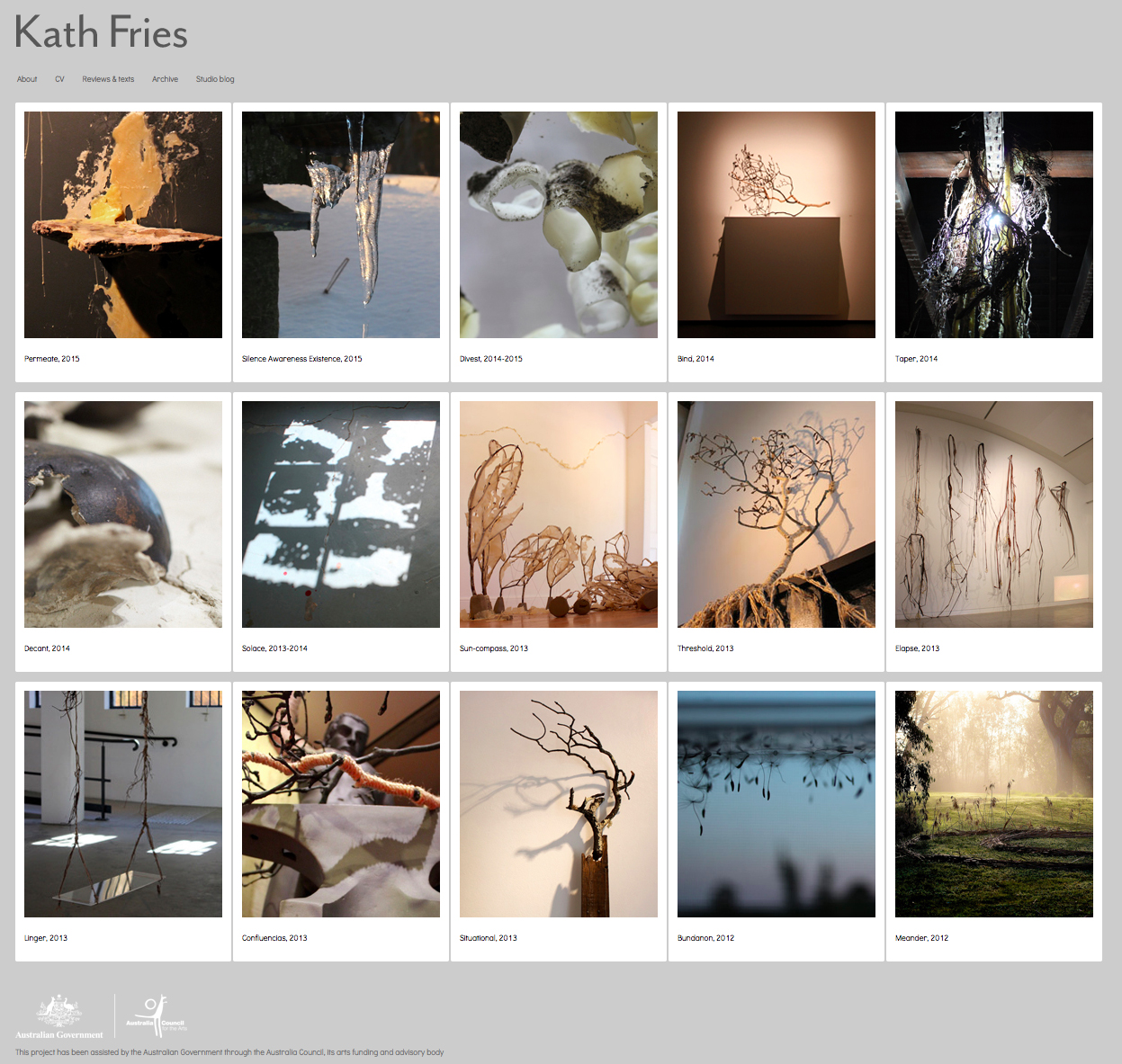 |
| Kath Fries, Sun-compass work in progress, 2013, beeswax, thread and twigs |
I'm currently undertaking a project with Culture at Work, as the tenth artist in their 2013 art+science program. This work extends my use of beeswax as an sculptural material, referencing bees' communication dances and our reliance on bees to pollinate our food crops. My resulting installation Sun-compass will be exhibited 23-30 November 2013, at Accelerator Gallery, Pyrmont NSW.
 |
| Kath Fries, Sun-compass work in progress, 2013, beeswax, thread and twigs |
Sun-compass reflects the worker bee waggle dance - performed to communicate the direction and distance of pollinating flowers, in relation to the position of the sun. This tiny insect dance resonates with larger narratives about the complex relationships between bees and their understanding of the world outside the hive. From a human perspective Sun-compass considers how we are undermining our fragile relationships with bees, despite their integral connection to our very survival.
 |
| Kath Fries, Sun-compass work in progress, 2013, beeswax on wall |
Over the past twelve months I’ve been using beeswax in my installations, as a metaphor for impermanence and our
fragile relationships with nature. Currently beeswax is inexpensive and
relatively easy to obtain in Australia, but elsewhere in the world its
becoming rare and costly, indicative of increasing annual losses of
domesticated western honeybee hives in Europe, America and China. This alarming
epidemic is termed Colony Collapse Disorder (CCD).
Globally we rely on domesticated western honeybees to pollinate one third of all food crops, so the disappearances of these bees has dire implications on the international agricultural industry and our food supply. Scientists estimate that the domesticated western honeybee species will become extinct in most parts of the world, within twenty years if CCD continues at this rate. CCD is caused by neonics pesticides sprayed on crops; the residual toxin in the plant pollen and nectar weakens the bee’s immune systems, eventually killing the bee. This is compounded by a combination of factors including mites, parasites, viruses, genetics, habitat loss, environmental change related stress, malnutrition, and migratory beekeeping.
 |
| Kath Fries, Sun-compass work in progress, 2013, beeswax on wall |
Globally we rely on domesticated western honeybees to pollinate one third of all food crops, so the disappearances of these bees has dire implications on the international agricultural industry and our food supply. Scientists estimate that the domesticated western honeybee species will become extinct in most parts of the world, within twenty years if CCD continues at this rate. CCD is caused by neonics pesticides sprayed on crops; the residual toxin in the plant pollen and nectar weakens the bee’s immune systems, eventually killing the bee. This is compounded by a combination of factors including mites, parasites, viruses, genetics, habitat loss, environmental change related stress, malnutrition, and migratory beekeeping.
Sun-compass
Accelerator gallery
23 - 30 November, 2013
Opening: Sat 23 Nov, 3-5pm
Public talk: Thurs 28 Nov 6pm
Gallery hours: Wed-Sat, 1-5pm























%2BWhite%2C%2BBRANCH%2B3d.jpg)

















.jpg)













